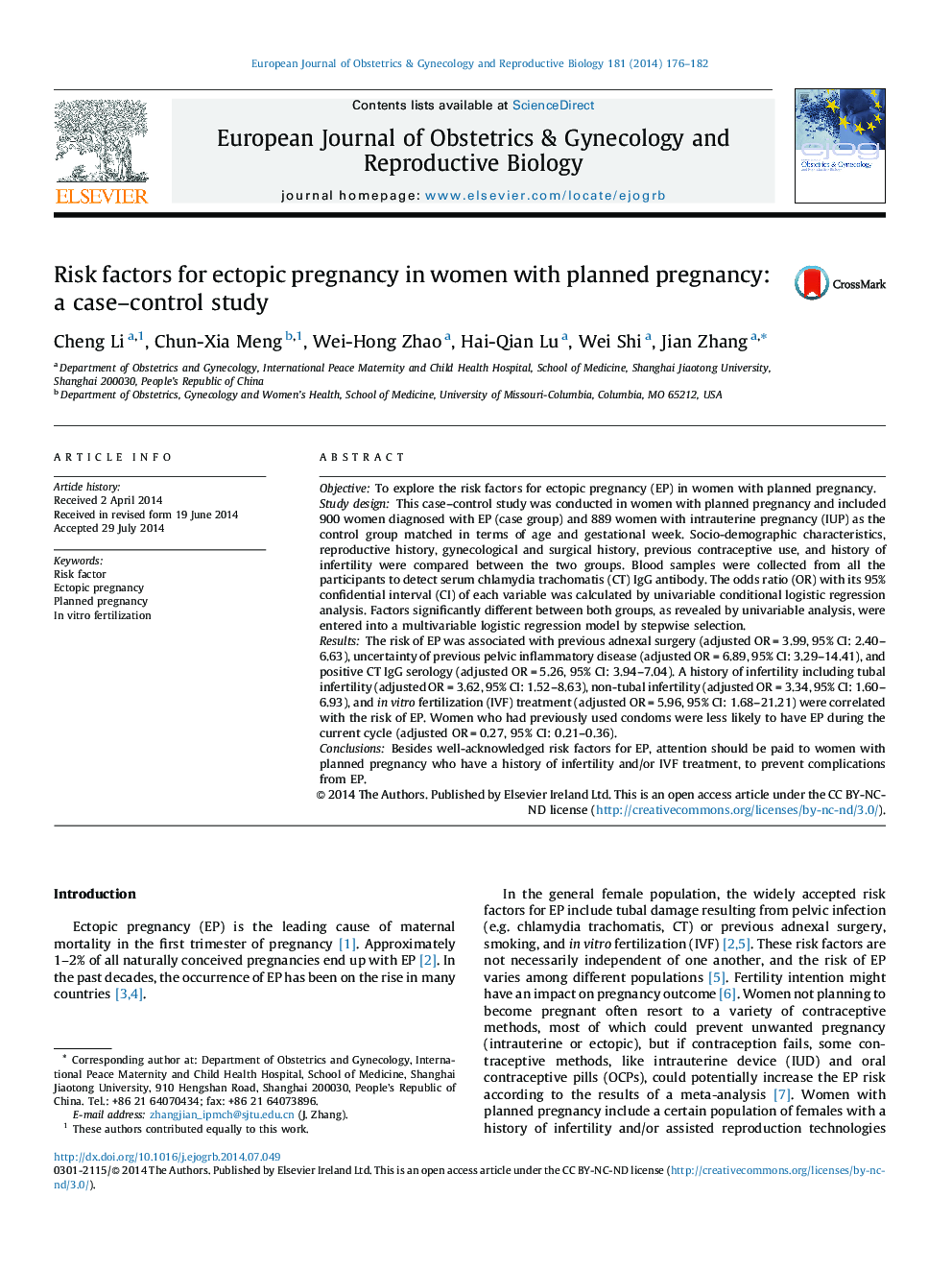| کد مقاله | کد نشریه | سال انتشار | مقاله انگلیسی | نسخه تمام متن |
|---|---|---|---|---|
| 6173244 | 1599800 | 2014 | 7 صفحه PDF | دانلود رایگان |
ObjectiveTo explore the risk factors for ectopic pregnancy (EP) in women with planned pregnancy.Study designThis case-control study was conducted in women with planned pregnancy and included 900 women diagnosed with EP (case group) and 889 women with intrauterine pregnancy (IUP) as the control group matched in terms of age and gestational week. Socio-demographic characteristics, reproductive history, gynecological and surgical history, previous contraceptive use, and history of infertility were compared between the two groups. Blood samples were collected from all the participants to detect serum chlamydia trachomatis (CT) IgG antibody. The odds ratio (OR) with its 95% confidential interval (CI) of each variable was calculated by univariable conditional logistic regression analysis. Factors significantly different between both groups, as revealed by univariable analysis, were entered into a multivariable logistic regression model by stepwise selection.ResultsThe risk of EP was associated with previous adnexal surgery (adjusted ORÂ =Â 3.99, 95% CI: 2.40-6.63), uncertainty of previous pelvic inflammatory disease (adjusted ORÂ =Â 6.89, 95% CI: 3.29-14.41), and positive CT IgG serology (adjusted ORÂ =Â 5.26, 95% CI: 3.94-7.04). A history of infertility including tubal infertility (adjusted ORÂ =Â 3.62, 95% CI: 1.52-8.63), non-tubal infertility (adjusted ORÂ =Â 3.34, 95% CI: 1.60-6.93), and in vitro fertilization (IVF) treatment (adjusted ORÂ =Â 5.96, 95% CI: 1.68-21.21) were correlated with the risk of EP. Women who had previously used condoms were less likely to have EP during the current cycle (adjusted ORÂ =Â 0.27, 95% CI: 0.21-0.36).ConclusionsBesides well-acknowledged risk factors for EP, attention should be paid to women with planned pregnancy who have a history of infertility and/or IVF treatment, to prevent complications from EP.
Journal: European Journal of Obstetrics & Gynecology and Reproductive Biology - Volume 181, October 2014, Pages 176-182
